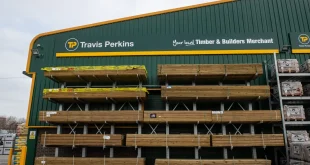If you really believe that you’re making a difference and that you can leave a legacy of better schools and jobs and safer streets, why would you not spend the money?
Publishing deadlines – even online ones – being what they are, I am writing this slightly in advance of Philip Hammond’s first Autumn Statement as Chancellor of the Exchequer.
We had a hint earlier on this year of what the construction industry can expect from today – a big hunk of money to build affordable homes. £1.4bn to be precise to build 40,000 affordable homes.
Hooray. The Government is listening. The Government is prepared to invest in the housing sector. The Government has got its act together and is working to build a better society where everyone who wants to can afford somewhere to live. Ok, maybe that’s tripping into Never-Never Land a bit, but the announcement will be welcome.
People need places to live. They need those places to live to be affordable and they need those places to be accessible. By which I mean, they need to be in the sort of locations where there are jobs and schools and transport infrastructure. If you travel round the country, you can find loads of housing estates which, when they were built in the 1980s and 1990s, were effectively in the middle of nowhere, with no infrastructure. That may well have been added in now, but for a long time, many of those residents were marooned, reliant on their cars to get anywhere, because the bus companies hadn’t got around to adding routes there yet.
These days, it’s much more likely that a development won’t get permission unless there is investment into a suitable number of affordable homes, local road infrastructure and, in many cases, the addition of a school. Two big estates in my town have been built in the last five years, both of them with new primary schools. Another is going through planning at the moment, also with a new primary school to be built. No new secondary schools for those primary school children to graduate to, but that’s a whole other argument.
So, it’s a good thing that there is a renewed emphasis on affordable homes from above. However, it leads me back to a question I’ve asked here before. Just what do we mean by “affordable” anyway? Is an an affordable home one that those on low to low-ish incomes can get a mortgage on in the first place, or one that they can afford to run?
If these ‘affordable’ homes were built to the proper standards – by which I mean standards that recognise the need for efficiency use of energy – they would be so much more affordable in the long run.
The Government needs to look at the bigger picture on this one. Cheap does not always mean affordable.
 Builders Merchants Journal – BMJ Publishing to Builders Merchants and the UK merchanting industry for more than 95 years
Builders Merchants Journal – BMJ Publishing to Builders Merchants and the UK merchanting industry for more than 95 years



